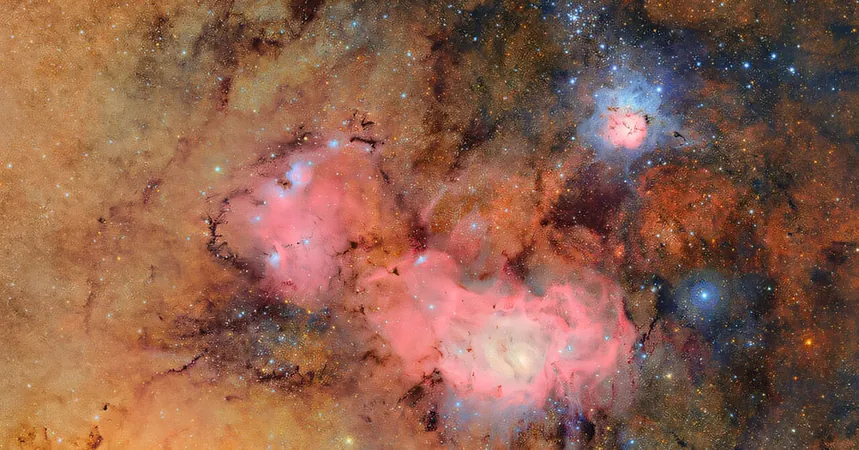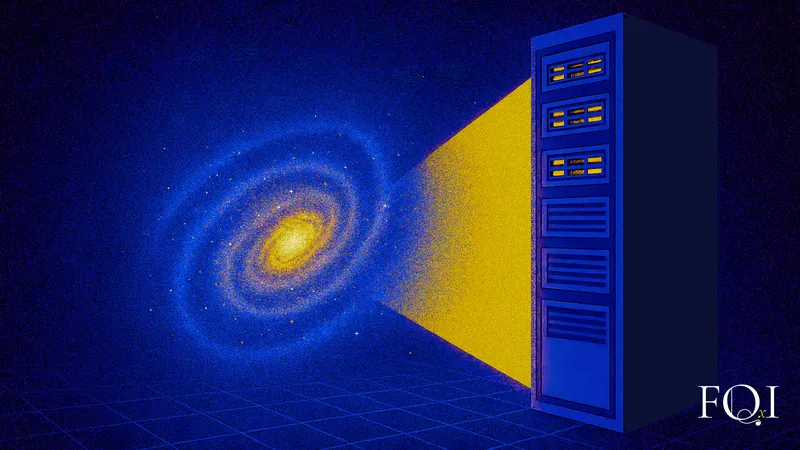
Astronomers Score Front-Row Seats to the Ultimate Cosmic Movie!
2025-06-30
Author: Rajesh
The Countdown Ends: A New Era in Astronomy Begins
After a decade of anticipation, astronomers in the U.K. are rejoicing as the NSF–DOE Vera C. Rubin Observatory unveils its stunning first images. This monumental achievement marks the beginning of the most ambitious sky survey ever undertaken.
A Revolutionary Cosmic Journey Awaits
The Rubin Observatory's Legacy Survey of Space and Time (LSST) promises to unravel the mysteries of the universe over the next ten years, creating an ultra-high-definition, time-lapse record of the cosmos that will captivate both scientists and skywatchers alike.
A Major Investment Fuels Discovery
Thanks to a £23 million investment from the Science and Technology Facilities Council (STFC), U.K. astronomers and software developers are gearing up to tackle the immense challenge of processing petabytes of data generated by this groundbreaking survey. This formidable endeavor aims to dramatically enhance our understanding of the universe.
U.K. Astronomers Take Center Stage
As the second-largest international contributor to this multinational project, U.K. astronomers are poised to leverage this unique opportunity, solidifying their leadership in cosmic research. The U.K. will play a pivotal role in managing and processing the unprecedented data flow from the Rubin Observatory.
A Data Processing Powerhouse
Hosting one of three international data facilities, the U.K. will process around 1.5 million images and catalog about 10 billion stars and galaxies. When this ten-year survey wraps up, it is expected to accumulate a staggering 500 petabytes of data.
Connecting the Global Astronomy Community
The U.K.'s science portal will facilitate collaborations among approximately 1,500 astronomers and provide them access to a uniquely enriched and detailed cosmic panorama.
Meet the Experts Behind This Ambitious Project
At Newcastle University, a dedicated team of cosmologists is integral to the project's success. From analyzing galaxy shapes and distances to modeling the enormous datasets, they're hard at work preparing for the first data release slated for late next year.
Unlocking the Mysteries of the Universe
Dr. Joachim Harnois-Deraps emphasizes the significance of this mission, stating, "The upcoming observations of over a billion galaxies will be crucial in furthering our understanding of dark matter and dark energy—two of the cosmos’s greatest enigmas."
The Future of Cosmic Exploration Is Here!
Conceived in the 1990s, the Rubin Observatory represents a revolutionary leap in astronomical design, featuring cutting-edge mirror technology, an impressive camera, and rapid observational capabilities. Over the next decade, it will be a treasure trove of new discoveries—detecting asteroids, unraveling the mysteries of pulsating stars, and witnessing supernova explosions. Exciting science operations are set to kick off by the end of 2025.

 Brasil (PT)
Brasil (PT)
 Canada (EN)
Canada (EN)
 Chile (ES)
Chile (ES)
 Česko (CS)
Česko (CS)
 대한민국 (KO)
대한민국 (KO)
 España (ES)
España (ES)
 France (FR)
France (FR)
 Hong Kong (EN)
Hong Kong (EN)
 Italia (IT)
Italia (IT)
 日本 (JA)
日本 (JA)
 Magyarország (HU)
Magyarország (HU)
 Norge (NO)
Norge (NO)
 Polska (PL)
Polska (PL)
 Schweiz (DE)
Schweiz (DE)
 Singapore (EN)
Singapore (EN)
 Sverige (SV)
Sverige (SV)
 Suomi (FI)
Suomi (FI)
 Türkiye (TR)
Türkiye (TR)
 الإمارات العربية المتحدة (AR)
الإمارات العربية المتحدة (AR)